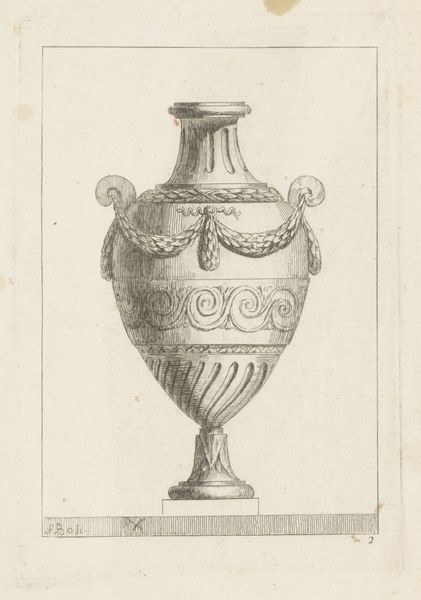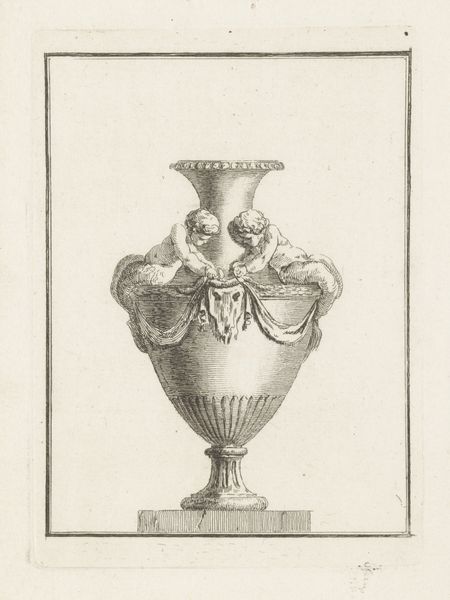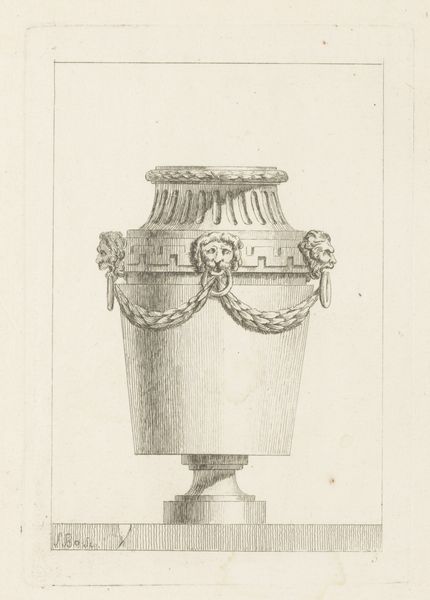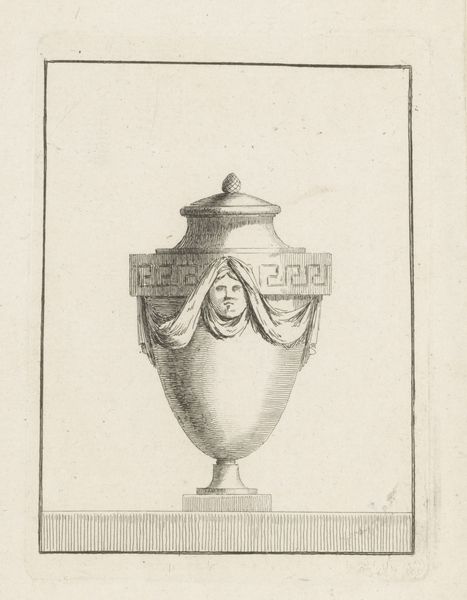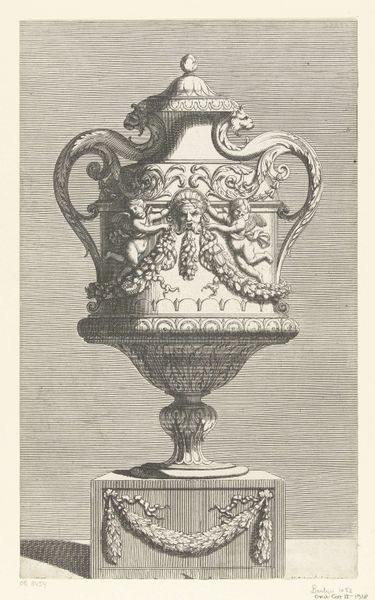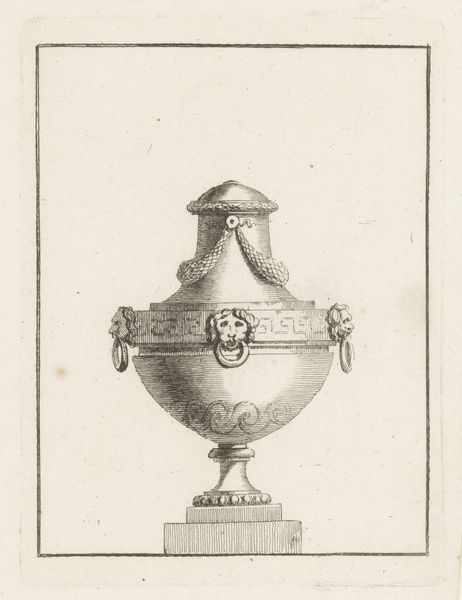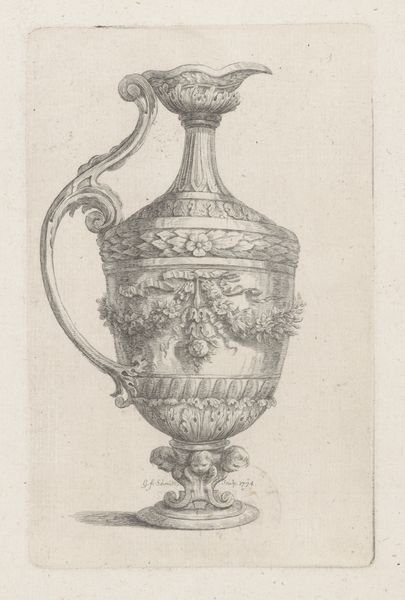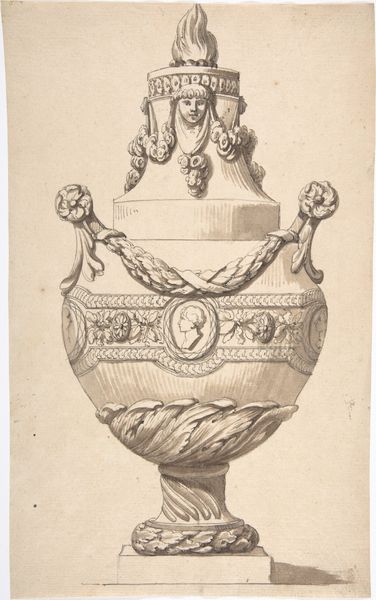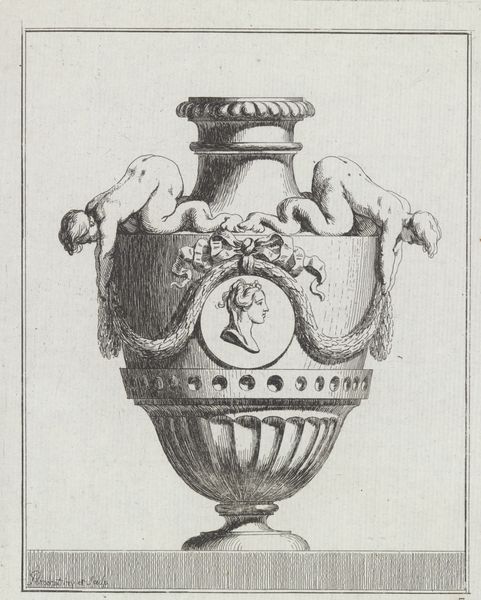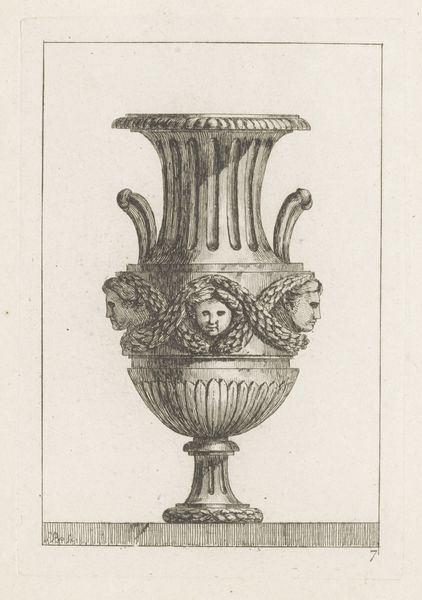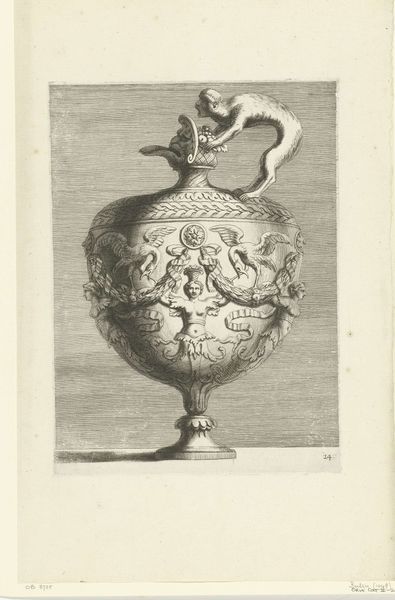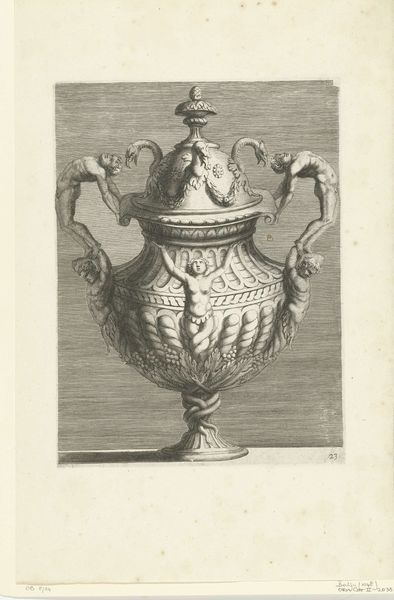
Dimensions: height 133 mm, width 97 mm
Copyright: Rijks Museum: Open Domain
Curator: This print, "Vaas met meerminnen," which translates to "Vase with Mermaids," dates from 1755 to 1782. The artist is Juste Nathan Boucher. The piece looks very delicate. It reminds me of something from a fairytale. What stands out to you about it? Editor: I'm struck by how ornate it is. The vase is adorned with these really intriguing mermaids. It feels like there is more than meets the eye. What do you see in this piece that might reveal its complexities? Curator: Look at the way Boucher, through engraving, elevates the design for a functional object, pushing it into the realm of art. Ask yourself: who had access to these vases and the skilled labour required to produce them, and what did these objects signify to them? Editor: So, you're thinking about this piece less as a standalone image and more as a document reflecting the economy that made this type of luxury object desirable? Curator: Precisely. These ornamental designs speak volumes about the socio-economic structures of the time. It is tempting to just accept their visual appeal at face value, but let's not neglect that someone had to make this. It suggests a context of wealth disparity and consumption of craft. Editor: I see what you mean. It really shifts my perspective to consider the human effort and economic realities behind this supposedly simple image. Curator: Think about it—the engraving itself is a product of skilled labor and a specific historical moment. Recognizing these conditions enables us to challenge what art is, its purpose, its role. How has this changed your view? Editor: It makes me realize that beauty and art are rarely detached from labor and power, which I didn't originally consider looking at it as purely ornamental. It shows an aspect I'd ignored.
Comments
No comments
Be the first to comment and join the conversation on the ultimate creative platform.

